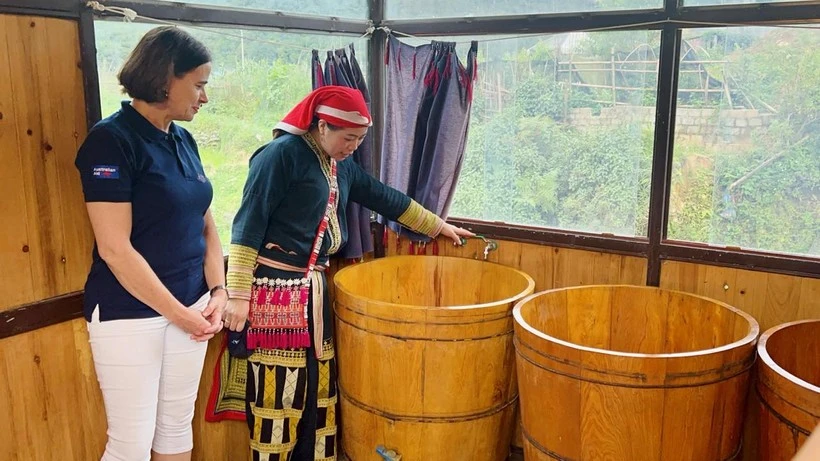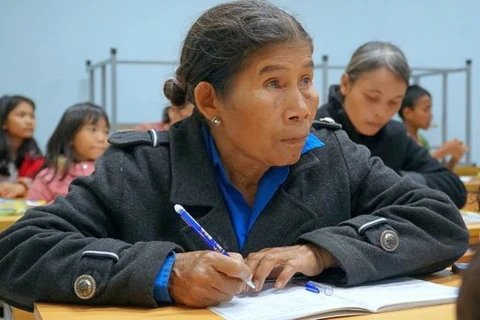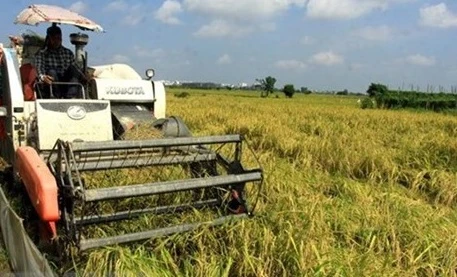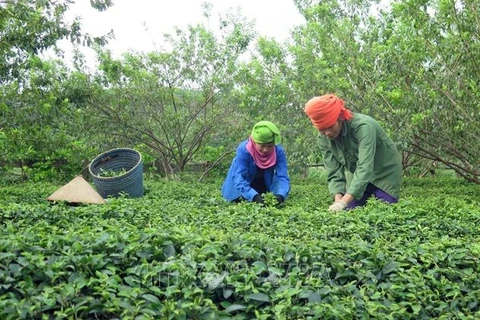
Hanoi (VNA) - Vietnam is also a leader in incorporating multidimensional poverty measures that go beyond income to include factors like access to health care, education, sanitation and clean water, into national policy, said Ramla Khalidi, UNDP Resident Representative in Vietnam.
In response to International Day for the Eradication of Poverty (October 17), themed "Ending Social and Institutional Maltreatment Acting together for just, peaceful and inclusive societies," Ramla Khalidi wrote an article entitled “The New Face of Poverty: for world poverty day” highlighting the achievements and challenges in poverty reduction in Vietnam.

Vietnam’s anti-poverty success widely recognized
According to the UNDP representative, Vietnam is widely recognised for the success of its anti-poverty programmes. Extreme poverty as defined by the World Bank declined from 45% in 1992 to 1% today.
Vietnam is also a leader in incorporating multidimensional poverty measures that go beyond income to include factors like access to health care, education, sanitation and clean water, into national policy. Since 2016, the government has closely monitored multidimensional poverty indicators, using them to implement regional and national anti-poverty programmes.
Vietnam is among 25 countries that have reduced their Multidimensional Poverty Index scores by 50%, she cited a study conducted by UNDP and the Oxford Poverty and Human Development Initiative.
Multidimensional poverty fell to 2.9% of the population at the end of 2023, according to the Ministry of Planning and Investment. Lack of access to education is the main cause of multidimensional poverty, especially in rural and remote areas.

Rapid and sustained economic growth and job creation have been the motors of poverty reduction in Vietnam. The steady shift in employment from agriculture to manufacturing and services has increased the share of the population working for steady wages, resulting in less exposure to period of under and unemployment.
The government has played a leading role in poverty reduction, through the various national targeted programmes for poverty reduction and rural development, and through mainstream programmes to achieve universal access to education and health services.
Numerous challenges
“Now that extreme poverty has been nearly eliminated in Vietnam, attention has shifted to emerging vulnerabilities associated with climate change and other environmental challenges, demographic shifts, technological change, and gender inequality,” she said.
Climate change will increase the incidence of extreme weather events like typhoons, droughts and floods. Typhoon Yagi was a stark reminder of the destructive power of severe weather events, and the damage they can cause to infrastructure, livelihoods and living conditions, especially among people living in rural and remote areas.

Investment in advanced early warning systems and storm-resistant infrastructure and housing can help protect these communities from falling into poverty as a result of bad weather. Strengthening social protection programmes to provide immediate support to sustain communities and households is also needed. Here the government also plays an important role in supporting recovery efforts through fiscal measures such as offering loan repayment relief for affected businesses. Such measures ease financial burdens during the immediate aftermath of a natural disaster.
Demographic change is another challenge. Vietnam will enjoy a demographic dividend until about 2040. This is defined as a period of low dependency ratios, when the number of working people exceeds the number of older people and children. As the number of older citizens increases, households will have to dedicate a larger share of their resources to supporting non-working family members. This could result in financial pressure on households that lack access to pensions. As a majority of Vietnamese people work in the informal sector, it is estimated that only one-third of households has access to some form of regulation income after retirement.
The impact of automation on poverty reduction in Vietnam is unknown. For example, more than three million people now work in the garment industry in Vietnam, many in labour-intensive assembly operations. These jobs have been resistant to automation because unit labour costs in Vietnam are still relatively low, and the cost of automation is high.
However, with the rapid incorporation of artificial intelligence into industrial operations it is conceivable that the number of workers required to perform simple assembly operations will fall in the near future.
In anticipation of this possible outcome, more investment is needed in vocational and higher education to prepare workers for the jobs of the future, many of which will require intermediate-level and advanced skills.
The growing importance of skills suggests that education and training is an important growth sector in Vietnam. Regulatory reform is needed to stimulate investment and job creation in the sector, especially in emerging fields like computer and data science, engineering, cybersecurity, logistics, and supply chain management.
A contributing factor to Vietnam’s rapid progress in eliminating poverty is the country’s high female labour force participation rate, which stood at 68% in 2023. However, traditional stereotypes and prejudices remain a barrier to women’s progress. A strict gender division of labour closes off some preferred jobs to women, and even when they are allowed to do the same jobs as men, they are often paid less. Gender-based violence is a major concern, with UNFPA estimating that nearly two-thirds of women between the ages of 15 and 64 have experienced some form of violence by men.

According to Ramla Khalidi, Vietnam has made progress to achieving SDG 5 on gender equality. The government has strengthened legal and policy frameworks to eliminate barriers for women and girls in terms of access to education, health care, employment and access to justice. However, discrimination and stereotypes are still obstacles to full equality. Men and boys do not share caring and household duties equally with women and girls, and women are under-represented in senior management in both the public and private sectors. In some rural and remote regions, child marriage, teenage pregnancy and marginalisation continue to affect women and girls of all ages.
“Importantly, we must remain vigilant in our efforts to eliminate stigma and discrimination from our institutions, cultural practices and behaviours. As member countries of the United Nations, we reaffirm, in the words of the UN Charter, “our belief in fundamental human rights, in the dignity and worth of the human person, in the equal rights of men and women and in nations large and small. It is this commitment to equality under the law, as citizens and as members of society that we celebrate today,” she noted./.






















